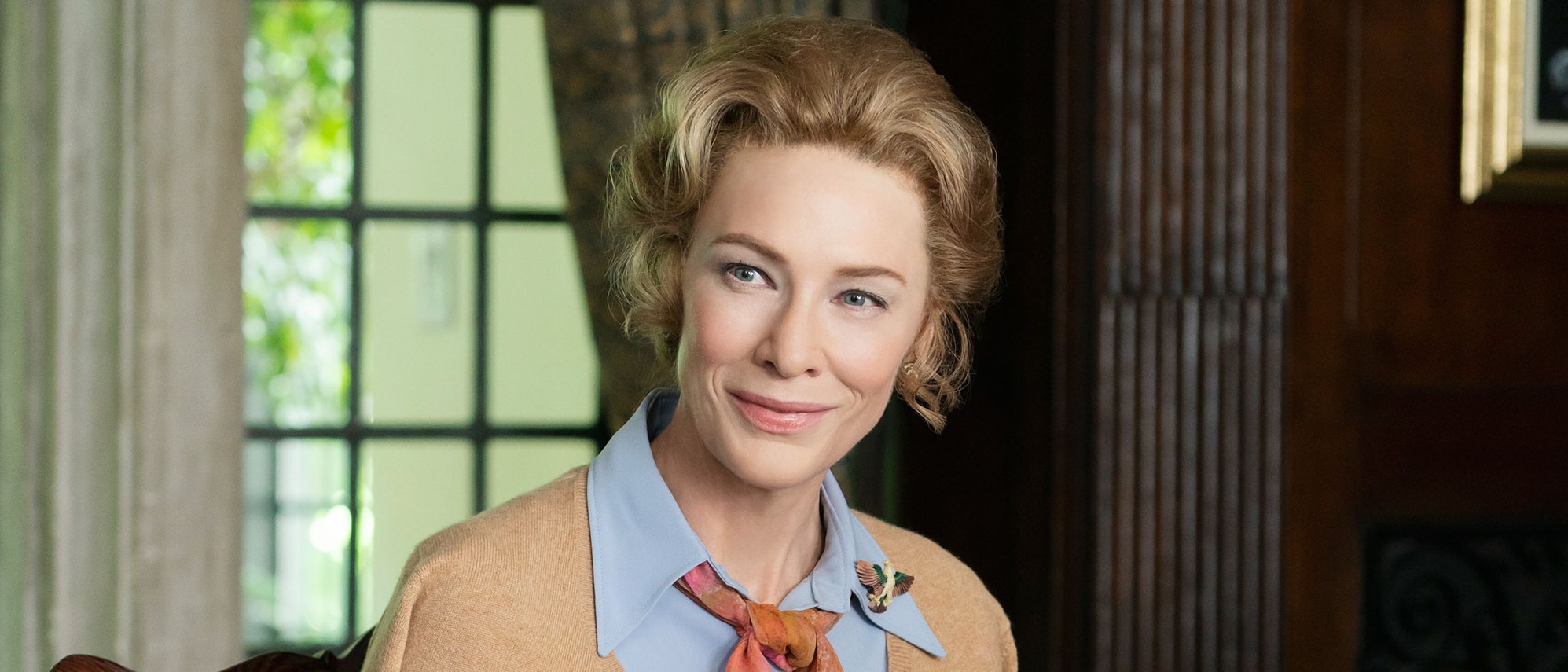The Nigerian writer, Chimamanda Ngozi Adichie (“Half of a Yellow Sun,’ ‘Americanah’), says that a single story can be dangerous. In many ways, Hulu’s ‘Mrs. America‘ maturely ensures that the “story” of the feminist movement does not get stuck in the same rut. Despite the fact that the show revolves around a woman who successfully opposed the ratification to the Equal Rights Amendment (ERA), ‘Mrs. America’ is very feminist in nature.
For starters, by depicting the second-wave feminist movement from both points of view, ‘Mrs. America’ essentially shies away from putting women in a box. Its main focus, or “Mrs. America,” is Phyllis Schlafly or “the sweetheart of the silent majority,” according to author Carol Felsenthal. But who was Phyllis Schlafly? What role did she play in the opposition to the ERA ratification?
Who Was Phyllis Schlafly?
Schlafly was born in St. Louis in 1924 during the Great Depression. To pay for her college education, she worked at the St. Louis Ordnance Plant at night, testing ammunition. She grew up to harbor aspirations of working in foreign policy matters. She was staunchly anti-communist and advocated for a more aggressive policy against communism. Ironically, in the man’s world of that era, she could not get too far ahead.
In 1952, she represented the Republican party in Illinois and ran for Congress. She attempted to portray herself as a housewife on a mission to end men’s corruption. However, her major political arguments were anti-communist, including the strengthening of the military. However, she lost and turned towards writing.
Schlafly co-authored anti-communist books like ‘The Gravediggers’ and ‘Strike from Space: A Megadeath Mystery’ with Rear Admiral Chester Ward. Then, in the 1970s, a friend urged Schlafly to look into the ERA. And this is when she “found an opportunity to not only stop an amendment she believed endangered American women, but to rise to national prominence” (Politico Magazine).
Mrs. America’s True Story: How Phyllis Schlafly Stopped the ERA Ratification
The reason that Phyllis Schlafly was able to stop the ERA ratification was because she “was articulate, quite intelligent and extremely well organized and she was deadly on the debate stage” (Crichlow, as cited on history.com). The Equal Rights Amendment proposed an end to constitutional discrimination based on gender. On March 22, 1972, the Amendment was approved by the U.S. Senate and sent to the state legislatures for ratification.
However, Schlafly opposed the ERA ratification, arguing that it could be interpreted in various ways since it was loosely worded. She professed how it could lead to the courts interpreting it in favor of abortion, same-sex marriage, and drafting women into the military. She organized the “STOP ERA” campaign with “STOP” standing for “Stop Taking Our Privileges.”
Schlafly rallied conservative women by persuading them that gender equality was not a good idea. “A woman should have the right to be in the home as a wife and mother,” said Schlafly. She advocated that being female came with its own privileges, which would be stripped away with the ratification of the ERA. She would resort to talking about worst-case scenarios, like how women would lose the privilege to not be drafted into the military. She also advocated that the ERA could lead to an end to separate washrooms for males and females. Moreover, she also professed how women would lose various government benefits and services if they were not looked at as dependents of their husbands.
Schlafly was able to succeed because second-wave feminism argued that personal matters were also political. This, at that time, was too radical as it “dragged a whole new set of issues into the public sphere—marriage, reproductive rights, sexuality—issues we now see as intractably political but which were considered private matters in midcentury America” (Politico Magazine). Although 30 states had already ratified the ERA within a year, Schlafly was able to rally conservative women to stop it from reaching the necessary 38 states.
This brings us back to why ‘Mrs. America’ is essentially feminist in nature. This is because it avoids the dangers of a single story. The second-wave feminists did not imagine that their biggest challenge would come from another woman, who would single-handedly stop the ERA. Of course, Schlafly’s core argument was flawed, and her victory was a result of her strong, populist, argumentative skills.
Schlafly was witty enough to realize that she could challenge the second-wave feminists by arguing against the single story that gender inequality should be welcome. Today, feminism argues against the very concept of gender roles. Gender roles are products of social conditioning and essentially discriminatory in nature. Why should a boy not be allowed to play with a Barbie doll? Why must a girl grow up to be a housewife? Why does the word “househusbands” not exist? In the ’70s, this concept was not so readily acceptable. Schlafly could use this vacuum to advance her own single story: that gender equality would entail an end to separate washrooms and the “privilege” of being a housewife.
Read More: The True Story Behind ‘Self Made’

